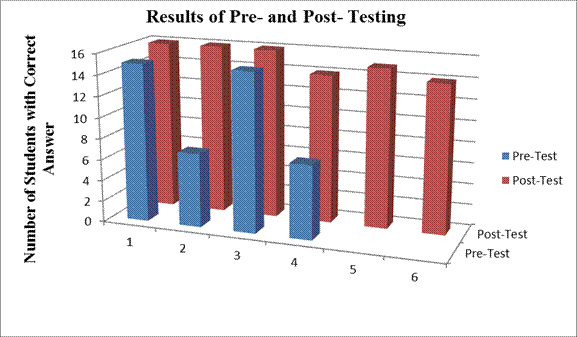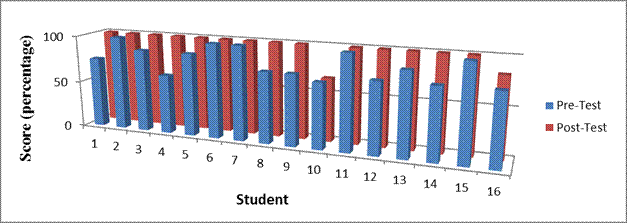Introduction to Fractions
Student work
Explanation of levels of work:
Student work is measured on four levels (4, 3, 2, and 1) as per the Halves and Fourths Representation Rubric (page 4). Level 1 is indicative of a student’s inability to complete the assignment without assistance. Student work can further be separated between distinguished, proficient and developing. The point distribution for each is as follows:
- 6 points- distinguished (100%)
- 4.5-5.9 points- proficient (75%-98%)
- 3-4.4-developing (50%-73%)
- 1.5-2.9 points- inability to complete assignment without assistance (25%-48%)
For the purpose of pre- and post- testing score comparison, questions were considered either completely correct or wrong, rather than based on a rubric score. This made it so comparisons could be more easily made between pre- and post- test scores.
Question Number
The pre-assessment was administered to the students prior to any instruction. Each question was read out loud and students were given ample time to complete his/her response. A grade was calculated through the use of the scoring rubric; however the score had no overall effect on students’ grades. It was simply a diagnostic measure of what knowledge students had coming into the Learning Experience. The graph above displays each question and the number of students that answered those questions prior to instruction and then again after instruction. For the purpose of the pre-test questions five and six were omitted (see appendix 2 for samples of the pre- and post- test).
Following the post-test, all questions showed improvement. The students’ overall understanding appears to have improved over the course of the Learning Experience.
Rubric scores, calculated during the post-test are distributed as follows (rubric scores were converted to percentages for the purpose of graphing growth):
Results of Pre- and Post- TestinG
Following the post-test, student scores were graphed in order to show individual improvement. All but one student (student 10) demonstrated a growth in understanding at the conclusion of the Learning Experience. This can be attributed to a number of things. Firstly, the student that showed a decline in score was absent for two days of instruction. Also, since the pre-assessment did not include question 5 and 6, questions 1-4 weighed more heavily in the overall percentage than they did in the post- testing. This student actually improved greatly in his responses to question 1-4 over the course of the Learning Experience, however during the post assessment, he performed below average on questions 5 and 6 which resulted in lower overall percentage (see student example in Appendix 3, pages 7-9).
Performance Level |
Number of Students |
Distinguished |
14 |
Proficient |
1 |
Developing |
1 |
Overall, during the post-assessment, 87.5% of students performed at a distinguished level, 6.25% performed at a proficient level, and 6.25% performed at a developing level. Examples of distinguished, proficient, and developing student work are included in Appendix 3.
Each question was read out loud to the students during the post-test. Two of the students who receive special education services were seated near a special education aide. Any threats to validity may be a result of any extra guidance which she may have given these students that other students did not receive (although to my knowledge, no extra help was given).
Distinguished
.png)
.png)
Rubric Grade: 6/6
Proficient
.png)
.png)
Rubric Grade: 5.5/6
Developing
.png)
.png)
Rubric Grade: 5/6